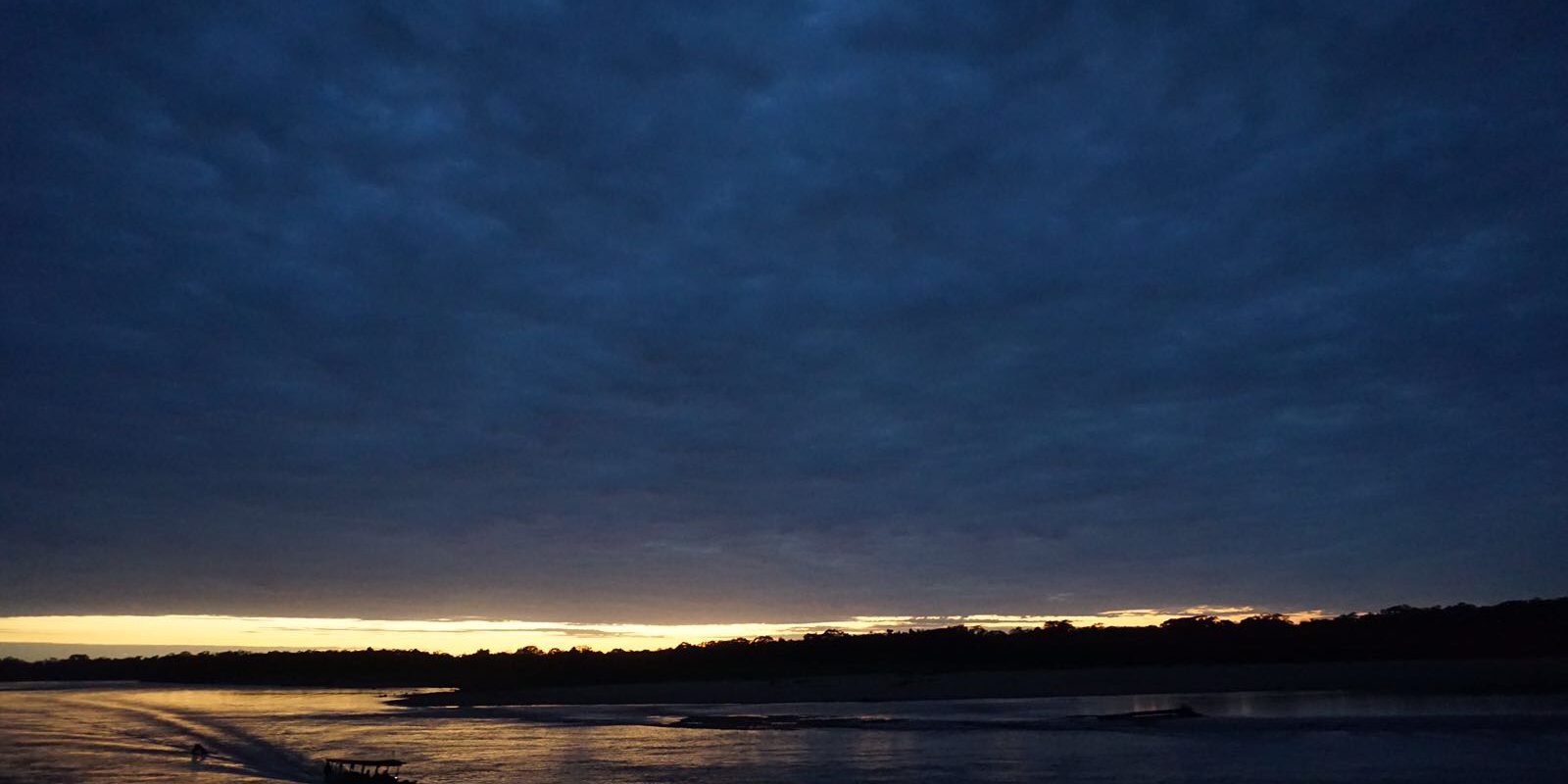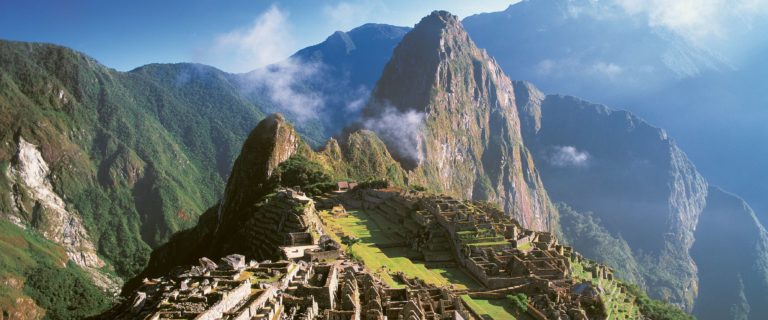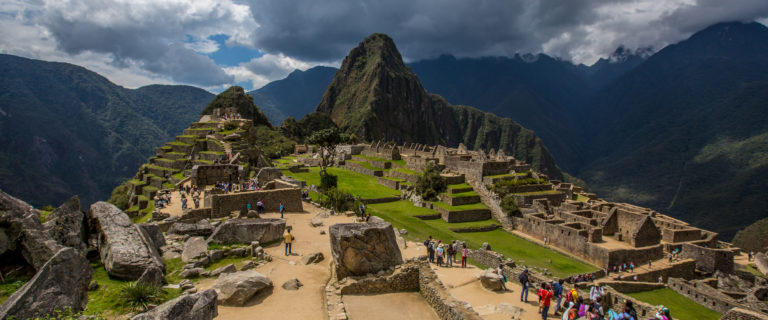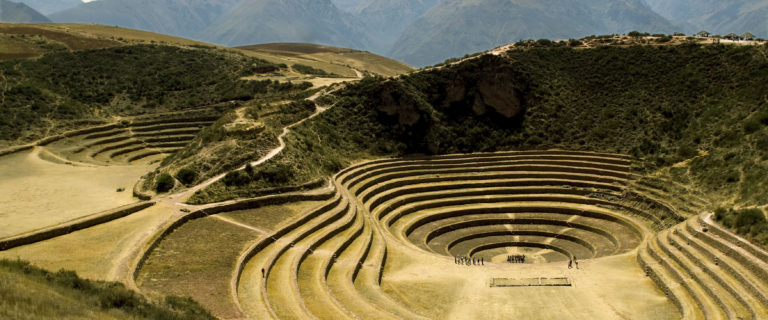The Amazon is a must-visit for many visitors to South America – and for good reason. The experience with nature and wildlife is second to none. Peru is considered one of the best places to visit the Amazon rainforest. Here the jungle teems with wildlife and is lush with greenery and beautiful fauna all year round.
There are only two seasons to consider when travelling to the Peruvian Amazon, or Latin America in general for that matter, wet and dry season. Of course this is a rainforest so you should always be prepared for rain. We choose to travel in the dry season. The rivers are a bit lower, and the boats go a bit slower because of this, but other than that, the wildlife is the same if not slightly better as animals aren’t sheltering from the Amazon downpours!
For me, the experience was all about the wildlife, and any luxuries after that were a bonus. I picked my lodge based entirely on this. Tambopata Research Centre is very remote and in the heart of the jungle. The journey alone exemplifies how deep in the jungle you are – a flight from Lima, a 1-hour road transfer and 7.5 hours motorised boat journey. For this reason your journey is broken up with a one-night stay at Refugio Amazonas en route. The boat is a wonderful way to travel and along the way we spotted white Caiman, hundreds of butterflies, Capybara (the largest in the rodent family, these animals can reach up 66kg!) and a range of birds. A stark contrast to my commute on the M25 everyday!
What’s there to do in the jungle?
Activities are varied and offer you the optimum chance of observing a huge variety of wildlife.
Climbing a 25-metre-high canopy tower, you remember where you are as the sun rises over the primary rainforest. From these heights, the views are astounding. Cloud is still thick in places, waiting for the sun to burn through, but everything is waking up and coming to life around you. The tower offers opportunities for seeing colourful birds, especially as they begin their dawn chorus.
You can hike through one of the many jungle trails, usually around three to five kilometres, on fairly flat ground and at a gentle pace, so nothing too taxing. As you traipse through the jungle, you will search for monkeys, big cats, birds, snakes, insects and much more. Howler Monkeys growl around you on your hike, letting other animals know that this is their territory. They can be heard up to three miles away, and before sunrise their distinctive sound can be a little scary to the untrained ear!
The array of birds to see is huge. I am not an avid ‘twitcher’, but I found them all beautiful and extremely interesting. I couldn’t begin to tell you every variety we saw – but I would guess over 50 in our 3 days. A personal favourite was the King Vulture, also known as a Jungle Condor. He is certainly an odd-looking chap, but wow, what a sighting!
The Macaw Project
The Tambopata Macaw Project is a long-term study of natural history, conservation and management of large macaws and parrots. Throughout most of tropical America, large macaws have suffered major population declines. For this reason, researchers monitor macaw nests, aim to increase survival rates of younger Scarlet Macaw chicks and document patterns of clay lick use by large macaws and other parrots. Since the project began in 1998, it has become one of the world’s foremost studies on wild macaws. Resident scientists at Tambopata Research Center are on hand to explain the project and any developments to guests during their stay.
We visited the Colpa Colorada clay lick, the largest parrot clay lick in the world. The steep clay banks morph into deep reddy-orange colours as the sun rises above the Amazon trees. The birds come to gather every day to eat the minerals found in the clay, they need these for survival in this dangerous habitat.
Dozens of species of parrot can be found, but this morning’s spot where we’ve arrived at is famous for the large Macaws. You are almost guaranteed to spot a few types of Macaws and parrots from your perch. If you are lucky, you may also spot a mammal, the night before the researchers showed us images of monkeys and even jaguars using the clay lick. Watching the birds slowly descend from the treetops to arrive at the clay lick can be a slow process, but as the noise increases and the sight of hundreds of birds taking flight at once is truly spectacular, making it well worth the wait.
Jungle Luxuries
Taking time to enjoy the lodge was not on my priority list, however, it was welcome in between activities. A Pisco Sour or three were enjoyed in an evening after dinner in the bar. The sheer length and quality of the cocktail list was surprising and made it much harder to get up for those 5 am wake up calls! But after a day of trekking and wildlife spotting, they were well deserved. It was also a great place to get to know the staff who help make this place a home for all us guests.
Hearing stories of their animal sightings, humouring me at every question I had about Jaguars and learning about their local cultures added so much to my experience and knowledge of the Amazon. We also strengthened bonds with the rest of our group, a family of Canadians who were at the end of their Peruvian adventure, having travelled the country for 1 month. They came with some good advice of how we should tackle the Inca Trail and where to find the best Pisco Sours!
The Best Is Yet To Come
After 3 nights in the Amazon it was time for our early-morning wake-up call and our journey back to civilisation. Reluctantly. Unfortunately, no jaguar or Puma was spotted during our stay, but there were many other amazing animals, birds and flowers, and amazing closeness to nature. You head off at 05:30 am by boat, but it is a lot quicker going downstream back to Puerto Maldonado and only takes around 4 and a half hours.
As we zipped along the river, just the seven of us and our guide all half asleep, our boat dramatically slowed. Jira leans into the boat, down the aisle to face us, and softly whispers, “two jaguar swimming!”. Immediately wide-eyed and bolt upright, all of us peered out of the boat. Sure enough, we could see the heads of two jaguars, mother and baby, and the mother’s large tail, swimming across the river.
Wow. This was it, the moment we had been hoping for. As we watch silently, bated breath and grinning like Cheshire cats, the jaguars make their way across the river, the cub quick to find shelter amongst the thick trees on the banks while the mother makes her way along the river’s edge detecting a chance at a meal. She silently makes her way toward the unsuspecting Capybara frolicking in the muddy banks.
The jaguar makes her move, lunch within leaping distance… but just then, the cub calls out, and her cover is blown… the Capybara scamper, throwing themselves into the river to escape. The Capybara are lucky this time. As were we. As the jaguar finds her cub and goes out of sight, we exhale, finally. The excitement of seeing the rare jaguars will stick with me for years to come, and no doubt be my go-to dinner party conversation.
Contact one of our Latin American experts today to begin your journey through the Amazon.




















